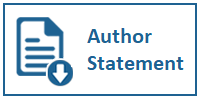THE DRIVING FACTORS FOR INVESMENT IN STOCK RETAIL INVESTORS DURING PANDEMIC COVID-19 IN INDONESIA
DOI:
https://doi.org/10.31937/akuntansi.v15i1.3163Abstract
Abstract - The covid-19 pandemic during 2020-2021 drove the economic uncertainty and stock retail investment in Indonesia. However, the stock retail transaction increased significantly during pandemic. The paper investigates the determinant factors of stock retail investor behaviour. Pandemic Covid-19 made people work from home and stay at home. Work from home with long hours at the computer made people interested in investing in the stock market. A high number of investors led by phenomenon referred to as herding by certain individuals or groups that are tempting to joint invest came from influencers or public figures. This study combines Theory Planned Behavior (TPB) and Technology Acceptance Model (TAM) to uncover the decision investment from retail investors. The novelty of the research is herding behavior as an antecedent of the decision. Online survey method is distributed through social media, email, and personal messages. The study is able to collect 116 respondents. The data will be analyzed using PLS – SEM. The research found that planned behavior does not significantly affect the investment behavior, while variables from TAM do significantly affect the investment decision. The study concludes that variables from TAM influenced the investment decision. The limitation is the herding behavior does not influence investor decision in stock market. The implication of the research is that retail investors are still interested in investing in stock. Technology indeed is an enabler for the stock trading process, although it seems investors prefer offline processes.
Keywords: Retail Investors; Attitude towards Behavior; Behavioral Control; Ease of Use of Digital Platforms; Herding Behaviour
Downloads
Downloads
Published
How to Cite
Issue
Section
License
Authors retain copyright and grant the journal right of first publication with the work simultaneously licensed under a Creative Commons Attribution-ShareAlike International License (CC-BY-SA 4.0) that allows others to share the work with an acknowledgement of the work's authorship and initial publication in this journal.
Authors are able to enter into separate, additional contractual arrangements for the non-exclusive distribution of the journal's published version of the work (e.g., post it to an institutional repository or publish it in a book), with an acknowledgement of its initial publication in this journal.
















